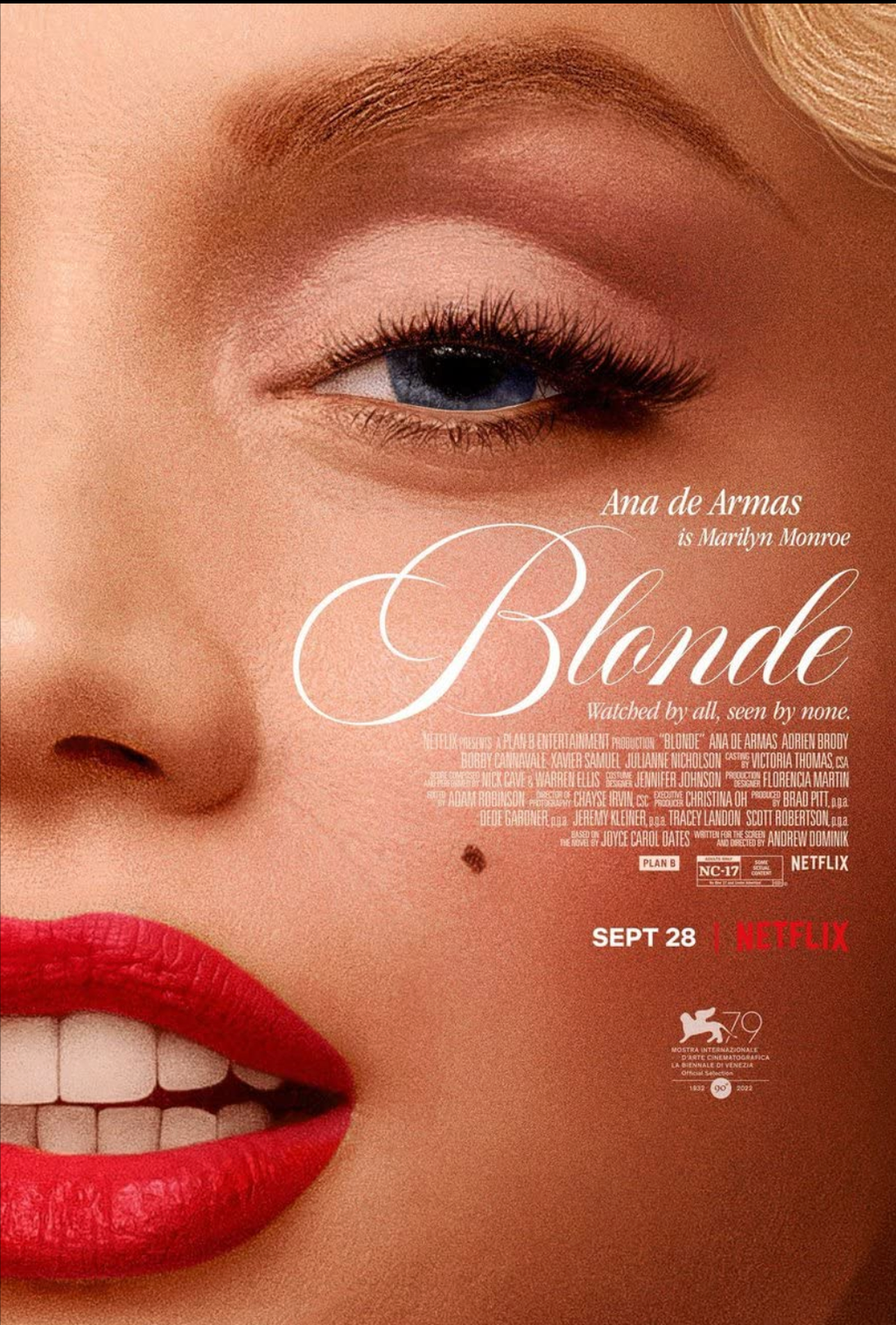Marilyn Monroe is undoubtedly one of the most recognizable figures to ever grace the silver screen, which made it only a matter of time until a mainstream studio corporation like Netflix scooped up her story once again and adapted it into their own hyperbolic, semi-biographical film.
As Ana de Armas takes on the role of the historically recognized actress, “Blonde” explores a stylized approach to Monroe’s personal life and highlights how her experiences both in and out of the spotlight motivated her.

While I expected the movie to blend in with the countless oversaturated biopics being churned out by Hollywood over the past decade, this one proved to set itself apart through its numerous controversies spanning from before the film’s production to after its release.
On the surface level, a story bringing the real Monroe to life beyond her famous persona could be a triumph. Especially considering the commercial and critical success of similar films in recent years. However, “Blonde” spends its almost 3-hour runtime turning the beloved Hollywood icon into a victimized caricature.
One of the primary criticisms of “Blonde” reaches both the movie and its source material — a 20-year-old book known by the same title and written by Joyce Carol Oates. Instead of taking a biographical form, the novel and subsequent film present fictionalized interpretations of different events in Monroe’s life. Many of these still have yet to be confirmed and continue to be highly speculated, including her infamous alleged affair with President John F. Kennedy. The plot merges reality and fiction in a way that makes it hard for the audience to decipher which is which, creating a narrative that plays out as a spectacle rather than a tribute.
Preceding its wide release, the film garnered a rare NC-17 rating due to extreme sexual content, including graphic nudity and depictions of assault. The trauma that Monroe suffered throughout her life (previously and only shared privately by the actress) is fetishized and pushed to the forefront of the film to create dramatic plot points that continue to overshadow the actress’s various personal and professional successes.
“If the audience doesn’t like it, that’s the f***ing audience’s problem, said director Andrew Dominik in an interview with Screen Daily. “It’s not running for public office.”
When asked about the film’s rating, Dominik continued by saying, “It’s an NC-17 movie about Marilyn Monroe, it’s kind of what you want, right? I want to go and see the NC-17 version of the Marilyn Monroe story.”
Following its Sept. 28 release on Netflix, the film became engrossed in its most recent scandal involving stigmatized portrayals of abortion. After an early scene depicts Monroe being coerced by her management to have an abortion, the film later includes a CGI fetus represented as a fully-formed baby conversing with Monroe.
Planned Parenthood representatives slammed this depiction, stating that “false images only serve to reinforce misinformation and perpetuate stigma around sexual and reproductive health care.”
Amidst the current political climate surrounding reproductive healthcare, combined with the fact that the movie is directed and largely produced by men, it is a difficult factor to gloss over as a viewer.
Unfortunately, it’s easy to watch the dramatic events of this film and forget that behind this story is Monroe’s real life and real trauma. Her life is one that deserves to be told respectfully or not at all. So, instead of watching “Blonde”, maybe consider watching Monroe yourself so that you can witness the true magic of her talents and presence.


